QR Zones of Green Cay Wetlands Boardwalk
Back to Introduction

 Follow this link to see a video presentation of this zone!
Follow this link to see a video presentation of this zone!
The hammock that makes up this zone is a well-developed evergreen hardwood and palm forest that is rarely inundated, though the soils are poorly drained. Plant species that grow in wetland hammocks are able to adapt to wet and dry conditions. This natural habitat supports a greater diversity of plants and animals than found on either continually wet or dry sites.The canopy is mostly closed and the undergrowth varies in height and density. In this zone you will find a Chickee Hut. Chickee is a Seminole word for "house." Chickee huts have been used for shelter by Native Americans in Florida for centuries. They are characterized by an elevated platform, a pole framing structure, and a thatched roof. The Chickee hut at Green Cay was built by modern-day Seminoles to replicate a traditional Chickee hut home.
Trees: Strangler Fig, Dahoon Holly, Sweet Bay, Red Bay, Swamp Bay Cabbage/Sabal, Palm, Laurel Oak, Florida Elm, South Florida Slash Pine, Live Oak, Mahogany.
Understory: Royal Fern, Myrsine, Wild Coffee, American Beauty, Berry, Coral-bean, Saw Palmetto, Narrow-leaved, Goldenrod, Hog-plum, Pond Apple.
Animals: Eastern Screech Owl, Various Songbirds, Snakes, Lizards, Tree Frogs.
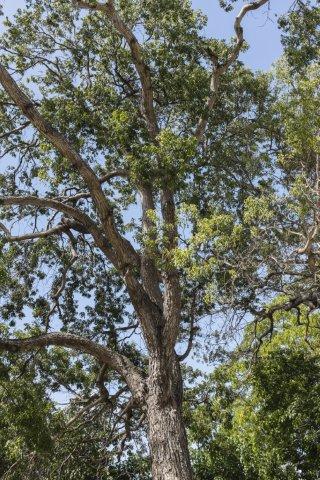
MAHAGONY TREE - The mahogany tree (Swietenia mahagoni) is a large tropical tree with a semievergreen growth habit. Mahogany trees produce broad, spreading growth with foliage that can span 50 feet in width and 75 feet in height at maturity. A mahogany tree's foliage forms a roughly symmetrical, round canopy. Although the tree grows from a single trunk, the main trunk branches off into several large stems that spread out and up from the main trunk starting 4 to 8 feet above the ground. It is a deciduous tree that drops its leaves late in the spring during dry weather. The leaves are quickly replaced, but a large tree can create a considerable amount of leaf litter.
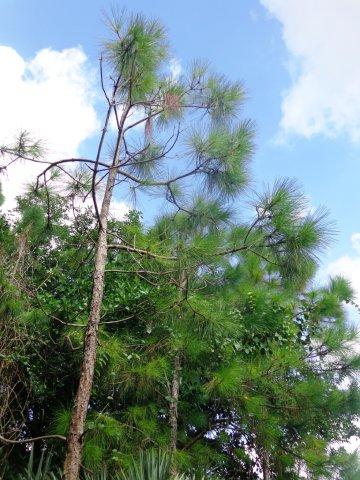
SLASH PINE - A pine native to the southeastern United States, from southern South Carolina west to southeastern Louisiana, and south to the Florida Keys. It is fast-growing, but not very long-lived by pine standards (to 200 years), and prefers humid climates and moist soils. Slash pine is named after the "slashes" – swampy ground overgrown with trees and bushes – that constitute its habitat. This tree reaches heights of 59–98 ft with a trunk diameter of 2.0–2.6 ft. The leaves are needle-like, very slender, in clusters of two or three, and are 7–9 in. long.
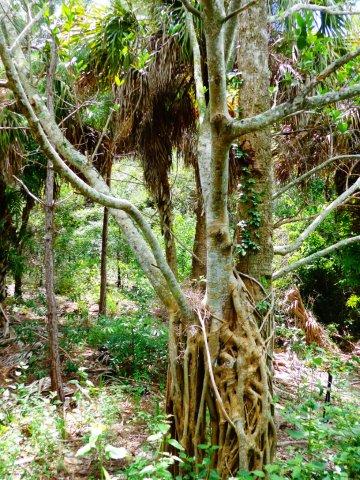
STRANGLER FIG - This plant starts out as an epiphyte and attaches to a host tree, usually a cabbage palm. The strangler fig sends out roots that tangle around the host and eventually strangles it. Still the strangler fig fills an important niche and food source to many tropical forest hammock creatures. Many forms of life are attracted to the fig tree because of its production of large amounts of fig fruits and can be the only source of food during certain seasons.
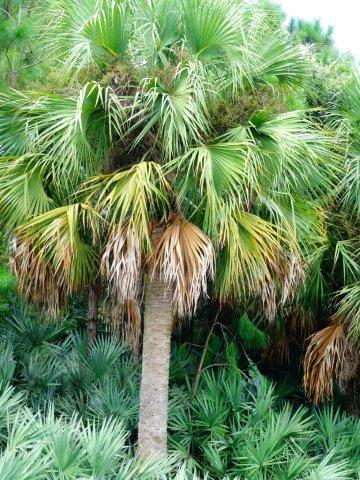
CABBAGE PALM - Also known as Sabal Palm. Florida designated the sabal palm (Sabal palmetto) as the official state tree in 1953. The sabal palm (also known as cabbage palm, palmetto, or cabbage palmetto) is the most widely distributed palm tree in Florida. It grows in almost any soil and has many uses, including food, medicine, and landscaping. Sabal palm trees grow up to 20 m in height. Sabal is a fan palm native to the southeastern United States, Cuba, and the Bahamas. The growing heart of the new fronds (also known as the terminal bud), gives the palm tree its "cabbage" name, since this can be harvested as a food and resembles a cabbage head in shape (this is the key ingredient for a "heart of palm salad")" This was a common food for native Americans, but this practice is very destructive because it will kill the palm (the terminal bud is the only point from which the palm can grow and without this bud the palm will not be able to replace old leaves and will eventually die).
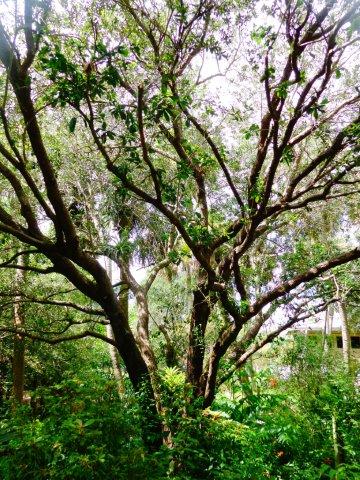
LIVE OAK - Large/spreading, leaves 2-5 inches, thick, dark above, paler below.
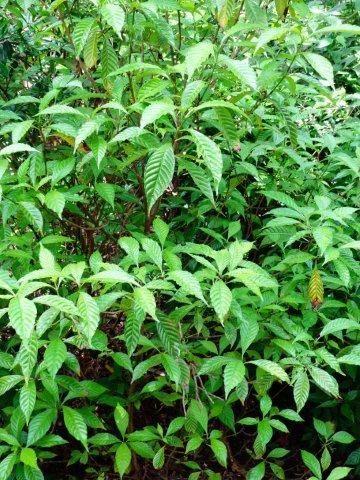
WILD COFFEE - Wild coffee shrubs are easily identifiable by the glossy deep green textured leaves. The red berries that appear during the summer attract a large amount of wildlife such as butterflies, birds, raccoons and rodents. The beans inside the berries give the plant its name: they can be brewed into a coffee. However, they contain no caffeine, are extremely bitter and unpleasant to the taste, and functions as a laxative to humans.
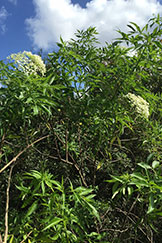
ELDERBERRY - American elder, or elderberry, is a bush shrub that grows to be around 10 to 15 ft. In most regions, elderberry flowers are produced throughout the spring and summer, but in much of Florida there are some elderberries in bloom every month of the year. The berries are highly edible by over 50 different species of birds. The flowers of American elder are used to make elderflower water which is used in perfumes, confectioneries and a pale champagne-like wine. Raw elderberries have an unpleasant taste and contain small amounts of poisonous alkaloids, which can be destroyed by cooking and made into pies, jellies, and of course, elderberry wine. Elderberries have more vitamin C per unit weight than oranges or tomatoes. Historically, Native Americans made much use of the American elder. They used the bark, flowers and fruits for medicines; and they made cakes, puddings, breads and drinks from the berries.
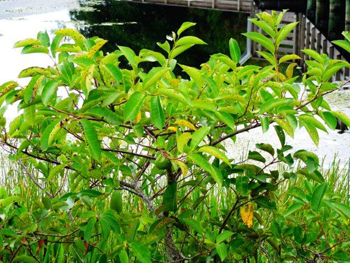
POND APPLE – In the Custard Apple family. Also known as Corkwood, Bobwood, Monkey-Apple, and Alligator-Apple. Alligators will eat them. A small to medium size tree grows to 40-50 in. with a swollen, buttressed base. Pond-apple fruits are eaten by many animal species: the common name alligator-apple is said to come from the fact that American alligators eat the fruit. The fruit has pungent to aromatic flesh, which is edible for humans, and can be made into jam. Some people consider the flavor agreeable, while others have characterized it as “insipid” or “scarcely desirable.”
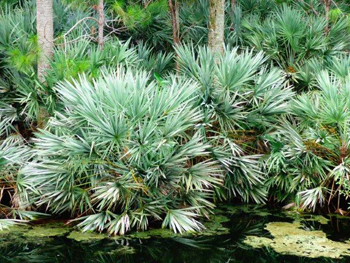
SAW PALMETTO - A small palm, normally reaching a height of three to six feet. Its trunk is sprawling, and it grows in clumps or dense thickets in sandy coastal lands or as undergrowth in pine woods or tropical hardwood hammocks. Interestingly, the fruits of the saw palmetto are highly enriched with fatty acids and phytosterols, and extracts of the fruits have been the subject of intensive research for the treatment of urinary tract infections. This extract is also commonly used for other medical conditions.
Green Cay Nature Center and Wetlands is owned and operated by the
Palm Beach County Parks and Recreation Department and the
Water Utilities Department.